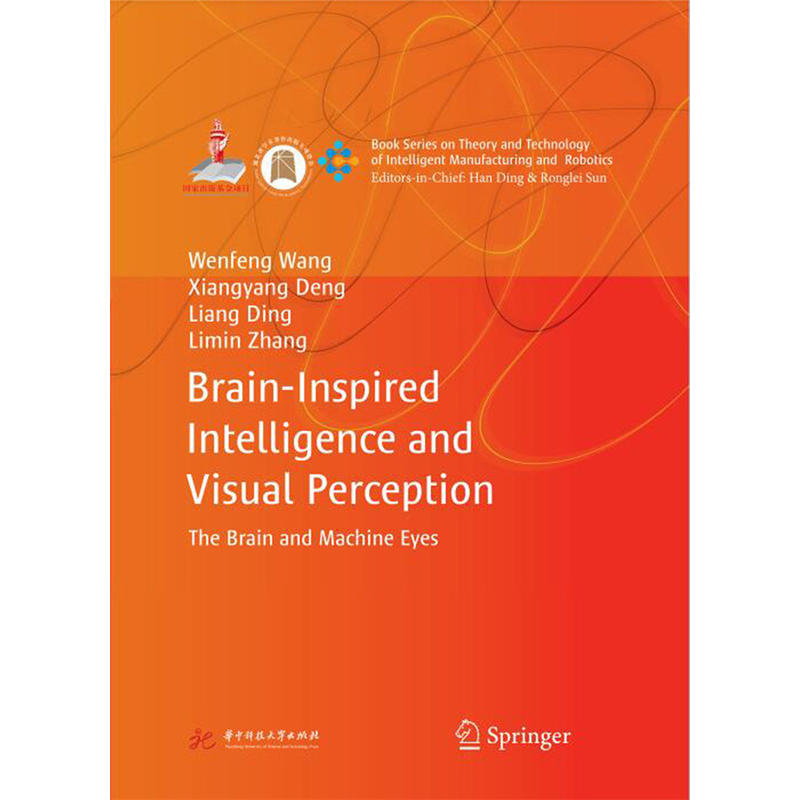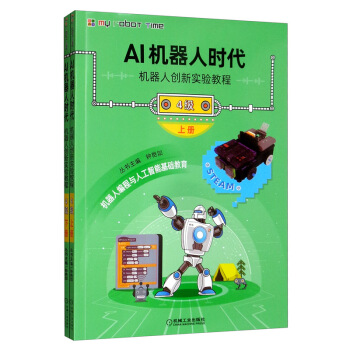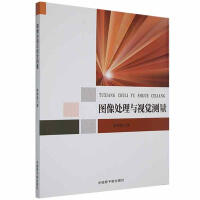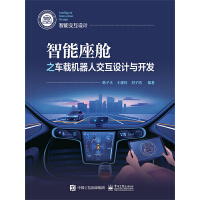

|
關(guān)于我們
 書單推薦 書單推薦 新書推薦 新書推薦 |
Brain-inspired Intelligenceand Visual Perception:The Brain 
In the 19th century, Spanish anatomists founded the theory of neurons. With the development of brain science, the biological characteristics of neurons and related electrical properties have been discovered. The advent of mathematical methods to simulate the actual human neural network in 1943 can be recognized as one of the notable landmarks. 63 years since then, deep neural networks were proposed and developed to simulate the structure of the human cerebral cortex. The emergence of deep learning has a great influence on the traditional artificial intelligence and enhanced the importance of brain-inspired intelligence in the whole field of artificial intelligence. This is a great dream into reality!
Brain-inspired intelligence has been proposed as a vision of the future for machine intelligence when Turing define intelligence and present experimental methods for judging whether a machine is intelligent. He wished that machines could work as well as the human brain. As an emerging branch in artificial intelligence, brain-inspired intelligence has attracted much attention. However, until now, there is not a widely-accepted theoretical framework of brain-inspired intelligence. It is still in debate whether brain-inspired intelligence should be recognized as a relatively independent branch of intelligence. One key problem is how to differentiate brain-inspired algorithms from other normal intelligent algorithms. The exact answer remains undetermined.In the 19th century, Spanish anatomists founded the theory of neurons. With the development of brain science, the biological characteristics of neurons and related electrical properties have been discovered. The advent of mathematical methods to simulate the actual human neural network in 1943 can be recognized as one of the notable landmarks. 63 years since then, deep neural networks were proposed and developed to simulate the structure of the human cerebral cortex. The emergence of deep learning has a great influence on the traditional artificial intelligence and enhanced the importance of brain-inspired intelligence in the whole field of artificial intelligence. This is a great dream into reality!Now researchers of machine intelligence are trying to review, summarize and further develop the past research achievements in speech, image and natural language processing from the perspective of deep Learning. This book reports our latest attempts in visual perception and also presents a better understanding of brain-inspired intelligence by establishing the vision brain hypothesis. We claim that Shu Li is a co-author of Chapter 4. Thanks to Professor Zongquan Deng, Professor Haibo Gao and some other colleagues for their significant contributions in originally published journal articles (associated with Chapters 4 and 5) and much appreciation to Ruyi Zhou and Huaiguang Yang for their great efforts in explicit re-organization of these published articles.
Wenfeng Wang is currently the leader of a CAS Light of West China Program (XBBS-2014-16) and has been invited as the director of the Institute of Artificial Intelligence, the College of Brain-inspired Intelligence, Chinese Academy of Sciences (to be set up in Nov. 2017). He also serves as a Distinguished Professor and the academic director of the R&D and Promotion center of artificial intelligence in the Robot Group of Harbin Institute of Technology, Hefei, China. His major research interests include functional analysis and intelligent algorithms with applications to video surveillance, ecologic modelling, geographic data mining and etc. He is the editor in chief of the book COMPUTER VISION AND MACHINE COGNITION (in Chinese), which has been published by Beihang University in China. Wenfeng Wang is enthusiastic in academic communications in any way and he served as PC members and Session chairs of a series of international conferences associated with the brain-inspired intelligence and visual cognition, including the 2017 IEEE International Conference on Advanced Robotics and Mechatronics, the 2017 International Conference on Information Science, Control Engineering and the 3rd International Conference on Cognitive Systems and Information Processing and etc. Xiangyang Deng is currently a full assistant professor with the Institute of Information Fusion, Naval Aeronautical University, Yantai, China. His current research interests include video big data, deep learning and computational intelligence. Xiangyang Deng has rich experience in R & D management. He won 3 First Class Prizes and 2 Third Class Prizes of Military Scientific and Technological Progress Award. He published 9 papers about the topics in the past 3 years while 5 of them were indexed by SCI, EI. He contributed to a monograph SWARM INTELLIGENCE AND APPLICATIONS (in Chinese), which was published by National Defense Industry Press. He has 2 patents and obtained 3 items of software copyright. Liang Ding is currently a full Professor with the State Key Laboratory of Robotics and System, Harbin Institute of Technology, Harbin, China. His current research interests include intelligent control and robotics, including planetary rovers and legged robots. Dr. Ding was a recipient of the 2017 ISTVS Shne-Hata-Jurecka Award, the 2011 National Award for Technological Invention of China and the 2009/2013/2015 Award for Technological Invention of Heilongjiang Province. He received the Hiwin Excellent Doctoral Dissertation Award, the Best Conference Paper Award of IEEE ARM, and the Best Paper in Information Award of the 2012 IEEE ICIA Conference. Liang Ding is an influential scientist in intelligent control of robots and has published more than 120 authored or co-authored papers in journals and conference proceedings. Limin Zhang is currently a Full Professor and Tutor for Doctor with the Institute of Information Fusion, Naval Aeronautical University, Yantai, Shangdong, China. He was a senior visiting scholar at university college london (UCL) Modern Space Analysis and Research Center (CASA) from 2006 to 2007. His current research interests include signal processing, Complex system simulation and computational intelligence. More than 180 papers are published and 80 papers are indexed by SCI, EI. 2 monographs are published and 20 patents are applied and 6 were authorized. Limin Zhang has won two Second Class Prizes of National Scientific and Technological Progress Award and five First Class Prizes of Military Scientific and Technological Progress Award. He has been selected as outstanding scientists in national science and technology and millions of talents in engineering research field and he is enjoying special allowance from the State Council.
1 Introduction of Brain Cognition /1 1.1Background/1 1.2TheoryandMechanisms /2 1.2.1 Brain Mechanisms to Determine AttentionValue of Information in the Video / 3 1.2.2 Swarm Intelligence to Implement the Above Biological Mechanisms/4 1.2.3 Models Framework for Social Computing in Object Detection /5 1.2.4 Swarm Optimization and Classification of the Target Impulse Responses /5 1.2.5 Performance of Integration Models on a Series of Challenging Real Data / 6 1.3FromDetectiontoTracking/ 7 1.3.1 Brain Mechanisms for Select Important Objects to Track/8 1.3.2 Mechanisms for Motion Tracking by Brain-Inspired Robots /9 1.3.3 Sketch of Algorithms to Implement Biological Mechanisms in the Model /10 1.3.4 Model Framework of the Brain-Inspired Compressive Tracking and Future Applications /11 1.4Objectivesand Contributions / 12 1.5 Outline of the Book /13 1.6 References / 15 2 The VisionBrain Hypothesis/17 2.1 Background / 17 2.2 Attention Mechanisms/19 2.2.1 Attention Mechanisms in Manned Driving /19 2.2.2 Attention Mechanisms in Unmanned Driving / 20 2.2.3 Implications to the Accuracy of Cognition /21 2.2.4 Implications to the Speed of Response/21 2.2.5 Future Treatment of Regulated Attention /22 2.3 Locally Compressive Cognition/ 23 2.3.1 Construction of a Compressive Attention /24 2.3.2 Locating Centroid of a Region of Interest /25 2.3.3 Parameters and Classifiers of the Cognitive System/25 2.3.4 Treating Noise Data in the Cognition Process/26 2.4 An Example of the VisionBrain / 27 2.4.1 Illustration of the Cognitive System /29 2.4.2 Definition of a VisionBrain / 31 2.4.3 Implementation of the VisionBrain/32 References/ 34 3 Pheromone Accumulation and Iteration / 41 3.1 Background /41 3.2 Improving the Classical Ant Colony Optimization / 43 3.2.1 Model of Ants Moving Environment /44 3.2.2 Ant Colony System: A Classical Model/44 3.2.3 The Pheromone Modification Strategy /46 3.2.4 Adaptive Adjustment of Involved Sub-paths /47 3.3 Experiment Tests of the SPB-ACO / 48 3.3.1 Test of SPB Rule / 48 3.3.2 Test of Comparing the SPB-ACO with ACS / 51 3.4 ACO Algorithm with Pheromone Marks/52 3.4.1 The Discussed Background Problem/52 3.4.2 The Basic Model of PM-ACO /53 3.4.3 The Improvement of PM-ACO/54 3.5 Two Coefficients of Ant Colonys Evolutionary Phases /55 3.5.1 Colony Diversity Coefficient/ 55 3.5.2 Elitist Individual Persistence Coefficient /56 3.6 Experimental Tests of PM-ACO /56 3.6.1 Tests in Problems Which Have Different Nodes / 57 3.6.2 Relationship Between CDC and EIPC /57 3.6.3 Tests About the Best-Ranked Nodes/58 3.7 Further Applications of the VisionBrain Hypothesis / 59 3.7.1 Scene Understanding and Partition/59 3.7.2 Efficiency of the VisionBrain in Face Recognition /63 References / 67 4 Neural Cognitive Computing Mechanisms / 69 4.1 Background /69 4.2 The Full State Constrained Wheeled Mobile Robotic System / 71 4.2.1 System Description/ 71 4.2.2 Useful Technical Lemmas and Assumptions/ 72 4.2.3 NN Approximation /73 4.3 The Controller Design and Theoretical Analyses / 74 4.3.1 Controller Design / 74 4.3.2 Theoretic Analyses of the System Stability /78 4.4 Validation of the Nonlinear WMR System / 81 4.4.1 Modeling Description of the Nonlinear WMR System/81 4.4.2 Evaluating Performance of the Nonlinear WMR System /81 4.5 System Improvement by Reinforced Learning/85 4.5.1 Scheme to Enhance the Wheeled Mobile Robotic System /85 4.5.2 Strategic Utility Function and Critic NN Design /89 4.6 Stability Analysis of the Enhanced WMR System/91 4.6.1 Action NN Design Under the Adaptive Law/ 91 4.6.2 Boundedness Approach and the Tracking Errors Convergence/92 4.6.3 Simulation and Discussion of the WMR System/ 96 References / 99 5 Integration and Scheduling of Core Modules/105 5.1 Background / 105 5.2 Theoretical Analyses /106 5.2.1 Preliminary Formulation/ 106 5.2.2 Three-Layer Architecture /109 5.3 Simulation and Discussion/114 5.3.1 Brain-Inspired Cognition /114 5.3.2 Integrated Intelligence/ 119 5.3.3 Geospatial Visualization / 126 5.4 The Future Research Priorities / 131 5.4.1 WheelTerrain Interaction Mechanics of Rovers/131 5.4.2 The Future Research Priorities /135 References / 136 6 Brain-Inspired Perception, Motion and Control/143 6.1 Background / 143 6.2 Formulation of the Perceptive Information / 145 6.2.1 Visual Signals in Cortical Information Processing Pathways /145 6.2.2 Formulation of Cognition in the VisionBrain/146 6.3 A Conceptual Model to Evaluate Cognition Efficiency /147 6.3.1 Computation of Attention Value and Warning Levels/ 147 6.3.2 Detailed Analysis on the Time Sequence Complexity / 151 6.4 From Perception to Cognition and Decision / 155 6.4.1 Brain-Inspired Motion and Control of Robotic Systems /155 6.4.2 Layer Fusion of Sensors, Feature and Knowledge / 155 6.5 The Major Principles to Implement a Real Brain Cognition/158 6.5.1 Intelligence Extremes of the Robotic VisionBrain /158 6.5.2 Necessity to Set an up Limit for the Robotic Intelligence / 159 References / 161 Index /165
你還可能感興趣
我要評(píng)論
|








